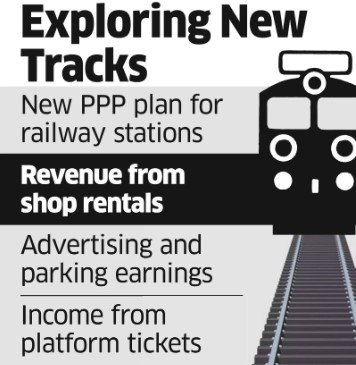Why PPP is Required in Infrastructural Projects?
Public-Private Partnerships (PPPs) are essential for infrastructure development due to several reasons:
- Financial Constraints: Governments often face budgetary limitations to fund large-scale infrastructure projects. PPPs allow them to leverage private sector capital, reducing the financial burden.
- Expertise and Efficiency: The private sector brings specialized expertise in project management, construction, and operations. This leads to efficient execution and better quality infrastructure.
- Risk Sharing: PPPs distribute risks between the public and private sectors. The private partner assumes operational and financial risks, while the government retains regulatory control.
- Innovation: Private sector involvement encourages innovation in project design, construction techniques, and service delivery.
- Focus on Public Services: PPPs allow governments to concentrate on core functions like policy-making and regulation, while the private sector handles project implementation and operations.
Role of PPP in Railway Station Redevelopment
Positives:
India’s railway network is vast but suffers from outdated infrastructure. PPPs offer a promising solution for redeveloping railway stations:
- Funding: PPPs can mobilize significant private investment for station redevelopment, including construction of commercial spaces, hotels, and retail outlets.
- World-Class Amenities: Private partners bring expertise in developing modern facilities like multi-modal integration, escalators, food courts, and waiting lounges, enhancing passenger experience.
- Commercial Viability: PPPs focus on generating revenue through commercial activities within the station complex, making the project financially sustainable.
- Efficient Operations: Private operators are incentivized to improve operational efficiency, leading to better service delivery and increased passenger satisfaction.
- Land Optimization: PPPs can facilitate optimal utilization of railway land through mixed-use development, creating additional revenue streams and urban development opportunities.
Example: Habibganj Railway Station
The redevelopment of Habibganj Railway Station in Madhya Pradesh is a successful PPP model. It has transformed the station into a world-class facility with commercial spaces, hotels, and improved passenger amenities. This project has set a benchmark for future railway station redevelopments in India.
Challenges and Risks in PPP Models for Railway Station Redevelopment:
Public-Private Partnerships (PPPs) in railway station redevelopment, while promising, come with their own set of challenges and risks.
Key Challenges and Risks
-
Financial Viability:
- Revenue Generation: Relying heavily on commercial development to generate revenue can be risky, especially in economically uncertain times or locations with low foot traffic.
- Cost Overruns: Unexpected cost increases due to factors like inflation, material shortages, or labor disputes can strain project finances.
- Return on Investment (ROI): Ensuring an attractive ROI for the private partner is crucial for project success, but it can be challenging to balance with public interest.
-
Contractual and Regulatory Issues:
- Complex Contracts: PPP contracts are often lengthy and complex, leading to potential disputes and delays.
- Regulatory Hurdles: Obtaining necessary approvals and clearances from multiple government agencies can be time-consuming and bureaucratic.
- Policy Changes: Changes in government policies or regulations after project commencement can impact project viability.
-
Risk Allocation:
- Risk Sharing: Clearly defining the allocation of risks between the public and private sectors is essential, but it can be contentious.
- Force Majeure: Identifying and addressing potential force majeure events (e.g., natural disasters, pandemics) is crucial to protect both parties.
-
Land Acquisition and Title Issues:
- Land Availability: Acquiring sufficient land for redevelopment can be challenging, especially in urban areas with high land prices.
- Land Title Disputes: Complex land ownership issues can lead to delays and legal complications.
-
Public Perception and Stakeholder Management:
- Public Opposition: Redevelopment projects may face resistance from local communities or affected businesses.
- Stakeholder Coordination: Managing the interests of various stakeholders, including commuters, retailers, and local authorities, can be complex.
-
Project Implementation and Management:
- Delay in Execution: Delays in project execution due to various factors can lead to cost overruns and affect project timeline.
- Quality Control: Ensuring the quality of construction and adherence to project specifications is crucial.
Mitigating Risks:
To address these challenges, it is essential to:
- Conduct thorough feasibility studies and financial analysis.
- Develop robust contract terms and risk allocation mechanisms.
- Establish effective project management and monitoring systems.
- Build strong relationships with government agencies and local communities.
- Implement transparent and competitive bidding processes.
- Learn from past PPP projects and incorporate best practices.
By carefully considering these challenges and implementing appropriate mitigation strategies, PPPs can be a successful model for railway station redevelopment, delivering improved facilities and services to the public.
In conclusion, PPPs are a valuable tool for accelerating infrastructure development, including railway station redevelopment. By combining public sector objectives with private sector efficiency and investment, PPPs can deliver modern, sustainable, and passenger-centric railway stations.


